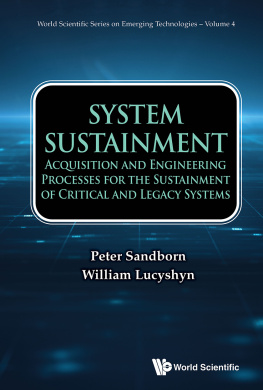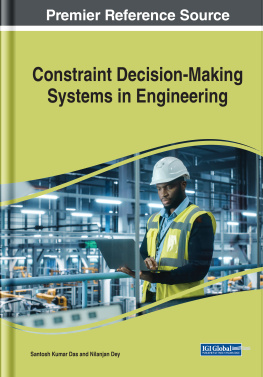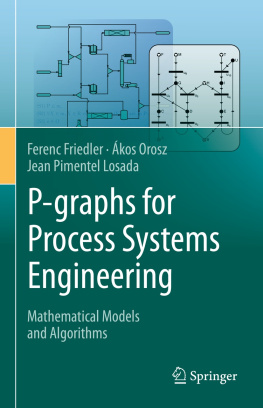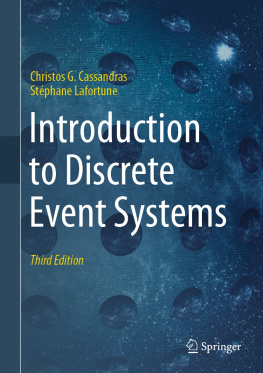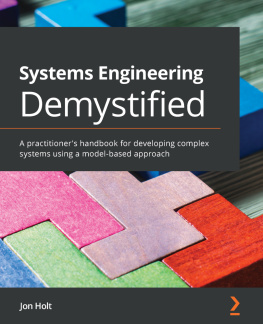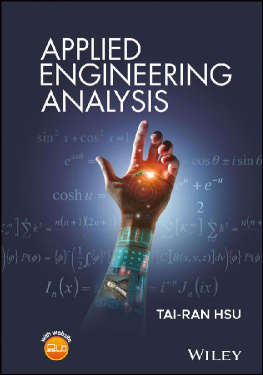Contents
Page List
Guide

CIVIL ENGINEERING
SYSTEMS ANALYSIS
CIVIL ENGINEERING
SYSTEMS ANALYSIS
LUIS AMADOR-JIMENEZ
Concordia University, Canada

MATLAB is a trademark of The MathWorks, Inc. and is used with permission. The MathWorks does not warrant the accuracy of the text or exercises in this book. This books use or discussion of MATLAB software or related products does not constitute endorsement or sponsorship by The MathWorks of a particular pedagogical approach or particular use of the MATLAB software.
CRC Press
Taylor & Francis Group
6000 Broken Sound Parkway NW, Suite 300
Boca Raton, FL 33487-2742
2017 by Taylor & Francis Group, LLC
CRC Press is an imprint of Taylor & Francis Group, an Informa business
No claim to original U.S. Government works
Printed on acid-free paper
Version Date: 20160419
International Standard Book Number-13: 978-1-4822-6079-3 (Paperback)
This book contains information obtained from authentic and highly regarded sources. Reasonable efforts have been made to publish reliable data and information, but the author and publisher cannot assume responsibility for the validity of all materials or the consequences of their use. The authors and publishers have attempted to trace the copyright holders of all material reproduced in this publication and apologize to copyright holders if permission to publish in this form has not been obtained. If any copyright material has not been acknowledged please write and let us know so we may rectify in any future reprint.
Except as permitted under U.S. Copyright Law, no part of this book may be reprinted, reproduced, transmitted, or utilized in any form by any electronic, mechanical, or other means, now known or hereafter invented, including photocopying, microfilming, and recording, or in any information storage or retrieval system, without written permission from the publishers.
For permission to photocopy or use material electronically from this work, please access www.copyright.com (http://www.copyright.com/) or contact the Copyright Clearance Center, Inc. (CCC), 222 Rosewood Drive, Danvers, MA 01923, 978-750-8400. CCC is a not-for-profit organization that provides licenses and registration for a variety of users. For organizations that have been granted a photocopy license by the CCC, a separate system of payment has been arranged.
Trademark Notice: Product or corporate names may be trademarks or registered trademarks, and are used only for identification and explanation without intent to infringe.
Library of Congress Cataloging-in-Publication Data
Names: Amador-Jimenez, Luis, author.
Title: Civil engineering systems analysis / Luis Amador-Jimenez.
Description: Boca Raton : Taylor & Francis, CRC Press, 2017.
Identifiers: LCCN 2016017853 | ISBN 9781482260793 (pbk.)
Subjects: LCSH: Civil engineering.
Classification: LCC TA147 .A43 2017 | DDC 624.01/1--dc23
LC record available at https://lccn.loc.gov/2016017853
Visit the Taylor & Francis Web site at
http://www.taylorandfrancis.com
and the CRC Press Web site at
http://www.crcpress.com
In loving memory of my dad (Luis Amador Sibaja) and
my grandmothers Claudia and Marina Chavarra Robles.
Contents
Individuals make hundreds of decisions every day, sometimes consciously but often unconciously. In doing so, we aim to achieve certain goals but, however, face restrictions. By reading this book, you aim to learn, or perhaps simply to obtain a good grade at school, but you are faced with a limited amount of time available to dedicate to it. A few personal decisions are transcendent enough to be organized into a more formal framework. Those consuming significant amounts of their own resources (purchase of a house/car or a major trip overseas) surpass a threshold level that force us to look into alternatives and to choose carefully.
This book deals with the methods and techniques that a civil engineer can use when analysing a system. It provides a means for supporting the decision-making process for the allocation of resources under circumstances with either conflicting goals or limited availability. The book presents two types of chapters; those intended to provide the basic foundations in mathematics, statistics and economics, and those that introduce and develop the application of the methods to real-world scenarios.
Civil Engineering Systems Analysis is a textbook of reference that teaches how to analyse engineering problems; however, its models are limited to the variables and facts incorporated into the analysis. Other variables and facts remaining outside the analysis should be used in a secondary stage to further reduce the set of choices or to choose the most convenient alternative.
The book is structured as follows: introduces uncertainty through decision trees and the use of conditional probabilities in decision-making.
Before we jump into that, I would like to close this preface by encouraging you to take the methods presented in this book and attempt to apply them as you learn them. Think about common day-to-day problems: Have you ever walked into the metro platform to a position that perfectly aligns you to the exit at your exit stop while you wait for the train to arrive? Do you ever purchase at the grocery store by analysing calories, fat and nutrient contents in addition to the price? Or do you ever buy what is on sale and enough to last until the next time it will be on sale? As you will soon notice, eventually, any decision you make in your personal and professional life can be optimized.
Luis Amador-Jimenez
MATLAB is a registered trademark of The MathWorks, Inc. For product information, please contact:
The MathWorks, Inc.
3 Apple Hill Drive
Natick, MA 01760-2098 USA
Tel: 508-647-7000
Fax: 508-647-7001
E-mail: info@mathworks.com
Web: www.mathworks.com
Civil engineers deal with three main tasks during their career: analysis, design and construction. When analysing, engineers are commonly required to verify and suggest means to comply with regulations or ways to improve the performance of a system, and, in doing so, they seek to achieve performance goals. In designing, engineers face the need to create built environment, and this typically results in conflicting objectives of professionalism, developers interests and resources. Finally, during construction, an engineer faces the need to allocate labour, equipment and materials to reach given milestones on time. However, timely achievement of such deadlines requires more intensive use of the resources mentioned which triggers project cost. Hence, the engineer is faced with two common conflicting goals: minimization of resource utilization and achievement of a certain level of quality and/or performance.
This morning, when you woke up, did the possibility to continue sleeping cross your mind? If so, then you had to make your first decision of the day. Why do you like to sleep? Your body gets some rest, you recover your energy and even your capability to learn reaches its highest point. So why then did you stand up and initiate your day instead of sleeping? You possibly either had breakfast, took a shower, exercised or finished your video game. Some time ago, economies defined a concept called utility, for you and me (who stay in bed for another 30 minutes). Sleeping gives us satisfaction, is valuable, is useful or, in other words, gives us utility. But the utility of sleeping was not as important for those who woke up and started their daily activities, perhaps because they have already slept for over 10 hours.


